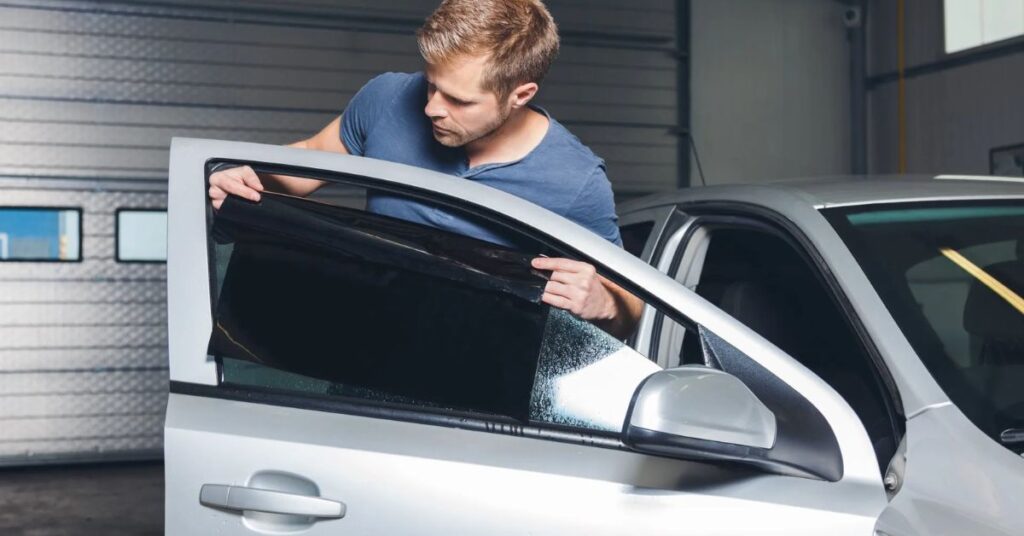In the sun-drenched state of New Jersey, drivers often seek respite from the glaring rays through tinted windows. However, it’s crucial to understand the intricate web of regulations surrounding window tinting. Ignorance of these laws could lead to hefty fines and potential legal troubles. This comprehensive guide aims to shed light on every aspect of New Jersey’s window tint laws, ensuring you can enjoy the benefits while remaining compliant.
Why Do Window Tint Laws Exist?
The primary objective of window tint laws is to strike a delicate balance between safety on the roads and individual preferences. Excessively dark or reflective tints can impair a driver’s ability to see pedestrians, obstacles, or other vehicles, thereby increasing the risk of accidents. Additionally, law enforcement officers need a clear line of sight into vehicles to assess potential threats and maintain public safety.
On the other hand, many drivers opt for tinted windows for privacy, aesthetics, or to reduce the sun’s harsh glare and heat within the cabin. Window tint laws aim to harmonize these desires with the overarching need for road safety.
Window Tint Laws for Passenger Vehicles in New Jersey

If you drive a passenger car, such as a sedan, SUV, or van, in New Jersey, here’s what you need to know:
- Front Windshield and Front Side Windows: No tinting is allowed on the front windshield or the front side windows (both driver’s and passenger’s side). These windows must allow at least 70% of visible light transmission (VLT) at all times.
- Rear Windows and Rear Windshield: You can apply any level of tint darkness on the rear side windows and rear windshield. However, the total light transmission through these windows must be at least 30%.
Note: The AS-1 line, which is typically a 5-inch wide strip parallel to the top of the windshield, is also known as the visor strip. You can apply tint above this line.
What is Visible Light Transmission (VLT)?
Visible Light Transmission (VLT) is a measure of the amount of light that can pass through a window tint film or glass. It is expressed as a percentage, with higher percentages indicating more light transmission and lower percentages indicating darker tints.
For example, a 70% VLT means that 70% of visible light can pass through the tint, while a 30% VLT means only 30% of light can penetrate.
Window Tint Reflectance Regulations
In addition to VLT restrictions, New Jersey also regulates the reflectivity of window tints. Under normal circumstances, the visible light reflectance of your vehicle’s tinted windows should not exceed 8%. This is the typical reflectance level of a non-tinted window.
Excessive reflectivity can create glare and impair visibility for other drivers, posing a safety hazard on the roads.
Medical Exemptions for Window Tinting

New Jersey recognizes that some individuals may require darker tints due to medical conditions that increase their sensitivity to sunlight. In such cases, drivers can apply for a medical exemption, which allows them to have tints that exceed the standard VLT limits.
To obtain a medical exemption, you must provide documentation from a licensed physician explaining your condition and specifying the recommended tint darkness. The application should include:
- Details of the medical condition involving photosensitivity (ophthalmic or dermatological)
- The specific wavelength or action spectra of light that triggers photosensitivity
- Test results, including skin tests for radiation wavelengths that elicit a photo-reaction
- Recommended treatment, including the specific tint darkness required
The Chief Administrator will review the application and determine the types of tints permitted on the windshield and front side windows, if necessary.
Important for Medically Exempted Drivers:
- The medical exemption certificate is valid for 48 months
- You must carry the certificate with you at all times and present it to law enforcement upon request
- If you sell or terminate the lease of the vehicle, you are responsible for removing the tint from the windshield and front side windows before doing so
Show Image
A doctor’s note is required to obtain a medical exemption for window tinting in New Jersey.
Different Types of Window Tints
For More :
Marc Guiu Players Bio: Age, Family, Parents, Team, Value
When it comes to window tinting, you have several options available. Here are the most common types:
Film Tints
Film tints are the most popular choice. They involve applying a thin film to the interior or exterior surface of the window. These films can be made of various materials, including polyester, metal, or ceramic, and can be customized to different levels of darkness and reflectivity.
Pros:
- Relatively inexpensive
- Easy to remove or replace
- Provide some level of UV protection
Cons:
- May bubble or peel over time
- Not as effective at blocking heat as other tints
Examples of film tints:
- 20% VLT Heat Rejecting Window Tint Film
- 35% VLT Heat Rejecting Window Tint Film
- 50% VLT Heat Rejecting Window Tint Film
- 70% VLT Heat Rejecting Window Tint Film
Coating Tints
Coating tints are applied directly to the window surface in liquid form and then harden into a thin coating. These tints are often used for commercial or industrial purposes due to their durability and scratch resistance.
Pros:
- Extremely durable and long-lasting
- Provide sound insulation
Cons:
- More expensive than film tints
- May not be as effective at blocking heat or UV rays
Factory Tints
Some vehicles come with factory-installed tints, typically on the rear windows and rear windshield. These tints are often lighter than what’s allowed by law and provide some level of privacy and UV protection.
Pros:
- Pre-installed when you purchase the vehicle
- Provide some benefits without additional investment
Cons:
- May not be as effective as aftermarket tints
- Limited customization options
How to Choose the Right Window Tint
With so many options available, selecting the right window tint can be a daunting task. Here are some factors to consider:
- UV Protection: Look for tints that offer strong UV protection to shield your skin and prevent interior fading.
- Heat Reduction: If you live in a sunny area or frequently drive during peak sun hours, opt for tints that effectively reduce heat inside the cabin.
- Glare Reduction: Tints can help minimize glare from the sun, improving visibility and reducing eye strain.
- Aesthetics vs. Practicality: While some drivers prioritize the look and privacy benefits of darker tints, others may value increased visibility and safety.
Enforcement and Penalties
In New Jersey, law enforcement officers are authorized to inspect the level of tint on a vehicle’s windows during routine traffic stops or inspections. They may use a photometer, a device that measures the amount of visible light transmitted through the windows, to determine if the tint level complies with the law.
If a driver is found to be in violation of the state’s window tint laws, they may face the following penalties:
- First Offense: Minimum fine of $1000
- Second and Subsequent Offenses: Fine of $5000
In addition to fines, drivers may also be required to remove the illegal tint before the vehicle can pass inspection or be registered.
Note: These regulations apply to all types of window tinting, including aftermarket film tints, coating tints, and factory tints.
Window Tint Rules for Installers
According to New Jersey law, window tint sellers and installers must inform buyers that it is illegal to apply tints to the front windshield or the front side windows of any vehicle registered in the state. They must also display a clear notice at their place of business, stating in bold letters:
“NJ STATE LAW PROHIBITS ADD-ON TINTING ON WINDSHIELDS AND FRONT SIDE WINDOWS.”
Installers are only permitted to apply tint to the windshield or front windows if the purchaser presents a valid medical exemption certificate.
FAQ on New Jersey Window Tint Laws
Q: What are the rules for tinted windows in New Jersey?
In summary, the rules for tinted windows in New Jersey are as follows:
- Front Windshield and Front Side Windows: No tinting allowed, 70% visible light transmission required
- Rear Windows and Rear Windshield: Any tint darkness allowed, but at least 30% light transmission

Augustus Wren, a celebrated author, has dominated the literary realm for 7 years. His expertise shines through at celebrithubs.com, where creativity and insightful narratives converge to captivate readers worldwide.








